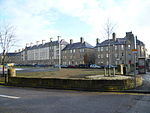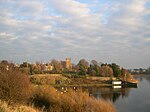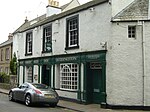Northfield, Edinburgh
1920s establishments in ScotlandAreas of EdinburghEdinburgh geography stubsHousing estates in EdinburghUse British English from December 2016

Northfield is a suburb of Edinburgh, the capital of Scotland. It lies east of the city centre and west of Portobello. The area was laid out at low densities as local authority housing but the city employed private architects for its design - Reginald Fairlie and Reid and Forbes. It was laid out from 1921 and took around three years to complete.Due to the high quality of the buildings it was a very popular area for tenants to purchase under the "Right to Buy" scheme and the area is now largely in private ownership. The quality is also reflected in that several of the groups are now listed buildings.
Excerpt from the Wikipedia article Northfield, Edinburgh (License: CC BY-SA 3.0, Authors, Images).Northfield, Edinburgh
Northfield Square, City of Edinburgh Northfield
Geographical coordinates (GPS) Address Nearby Places Show on map
Geographical coordinates (GPS)
| Latitude | Longitude |
|---|---|
| N 55.949444444444 ° | E -3.1355555555556 ° |
Address
Northfield Square
EH8 7PJ City of Edinburgh, Northfield
Scotland, United Kingdom
Open on Google Maps









